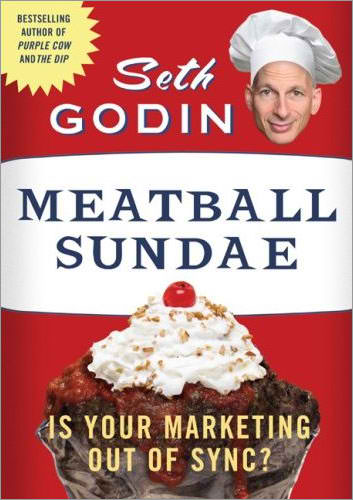 I just finished reading Seth Godin's new book, "Meatball Sundae." It was excellent and I have a lot of thoughts on it that I'm sure I'll post over the next couple of weeks.
I just finished reading Seth Godin's new book, "Meatball Sundae." It was excellent and I have a lot of thoughts on it that I'm sure I'll post over the next couple of weeks.
The book brought to mind a great podcast the other day from the Harvard Business Review. It was an interview with a professor from Columbia's business school (I think). Anyway, his thesis seemed to be an attack on Seth's thesis -- though I'm certain this wasn't his intent. For the record, Seth's thesis goes something like this...
Forget about interruption-based marketing. Instead build what he calls a "permission asset." That is, build a list of people that want to hear from you. How do you build this list? Basically through word of mouth. How do you get word of mouth? Build a product that is "remarkable" -- i.e. something that people will make a remark about.
I love this theory. I love it. I have to admit, though, that this seems a little bit too easy. And that is the point that this professor trying to make. That is, while Seth's theory is nice, it's not necessarily that easy. For every example that Seth gives in his new book, from iPods to Send-a-Ball's, there are probably 1,000 ideas that didn't spread. The Columbia professors theory combines a little bit of interruption-based marketing with an easy way for people to spread the word to dramatically increase the chances of a win.
More on this in the coming days...in the meantime, I should include a link to Seth's blog. He's a large inspiration for this one.
